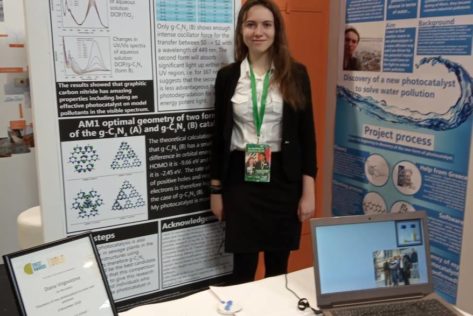PERSPECTIVES

I used quantum chemistry software and finally found graphitic carbon nitride: g-C3N4 (form B). After cooperation with scientists from Greece who helped me synthetize g-C3N4 (form B) I continued my experimental work in the lab.
The efficiency of g-C3N4 (form B) was investigated by using UV/Vis spectrometry. The results showed that graphitic nitride has amazing properties and can clean polluted rivers in the world.
This can be obtained by using a very simple method: We can just sprinkle g-C3N4 (form B) into rivers and wait for the results which means clean water.
When I was in India I saw black rivers. There I realized that pollution is enormous. I started to think about a solution for this problem and I found heterogenic photocatalysis.

Programme manager ania.andersch@siwi.org +46 8 121 360 59